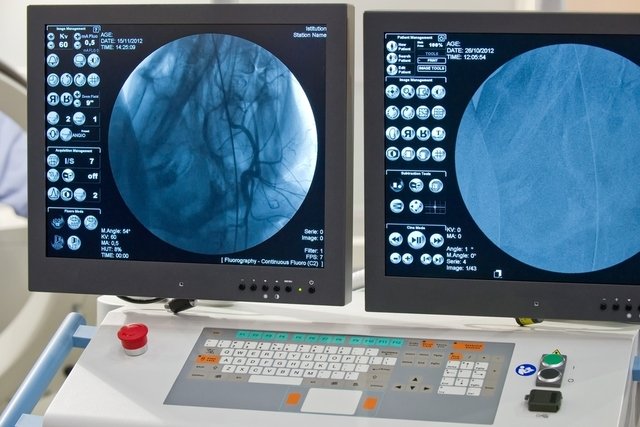Arteriography, also known as angiography, is a means of diagnosis that allows the observation of blood circulation and blood vessels in a specific region of the body, so that possible changes or injuries that are causing certain symptoms can be identified.
The regions in which this exam is most used are the retina, heart and brain and, in order to perform it, it is necessary to use a contrast substance, which makes the blood vessels more visible.

How the exam is carried out
The examination methodology varies according to the region to be analyzed. Before starting the exam, local anesthesia or sedation is administered and then a thin tube is inserted into an artery, generally located in the groin, which is then routed to the region to be analyzed, where a contrast substance is injected, and then they are collected the respective images.
During the examination, the doctor may take the opportunity to remove clots, perform an angioplasty, which consists of dilating a narrowed blood vessel, or inserting a mesh inside the vessel, so that it remains functional. See how angioplasty is performed.
The procedure takes about 30 minutes to 2 hours and is usually painless.
In what situations should it be done
Arteriography is an exam that is generally indicated in the following situations:
- Coronary heart disease, such as angina;
- aneurysms;
- Atherosclerosis;
- AVC;
- Myocardial infarction;
- Gangrene;
- Organ failure;
- Macular degeneration;
- Diabetic retinopathy.
How to prepare for the exam
Before the exam, the doctor may recommend stopping any treatment involving medications, such as antiplatelet drugs or anticoagulants, which interfere with blood clotting.
Furthermore, you should not eat or drink after midnight on the day before the exam.
However, in some cases, this exam may have to be carried out in an emergency, and it is not possible to prepare in advance.
What are the risks of the exam
Arteriography is relatively safe and complications are rare. In some cases, bruising or bleeding may appear in the region and, more rarely, infections or allergic reactions.
Bibliography
- Solace Quantitative coronary angiography: methods and applications . Available at: <https://solaci.org/wp-content/uploads/2015/09/Cap-19.pdf>. Access on December 11, 2019
- WORLD FEDERATION OF SOCIETIES OF ANAESTHESIOLOGIST. Coronary Artery Angiography. 2017. Disponível em: <https://www.wfsahq.org/components/com_virtual_library/media/fe379aca7b9a3859a5c6bedef687252f-ATOTW-361-Coronary-Artery-Angiography-portuguese.pdf>. Acesso em 11 dez 2019

Sign up for our newsletter and stay up to date with exclusive news
that can transform your routine!
Warning: Undefined array key "title" in /home/storelat/public_html/wp-content/plugins/link-whisper-premium/templates/frontend/related-posts.php on line 12
Warning: Undefined array key "title_tag" in /home/storelat/public_html/wp-content/plugins/link-whisper-premium/templates/frontend/related-posts.php on line 13



